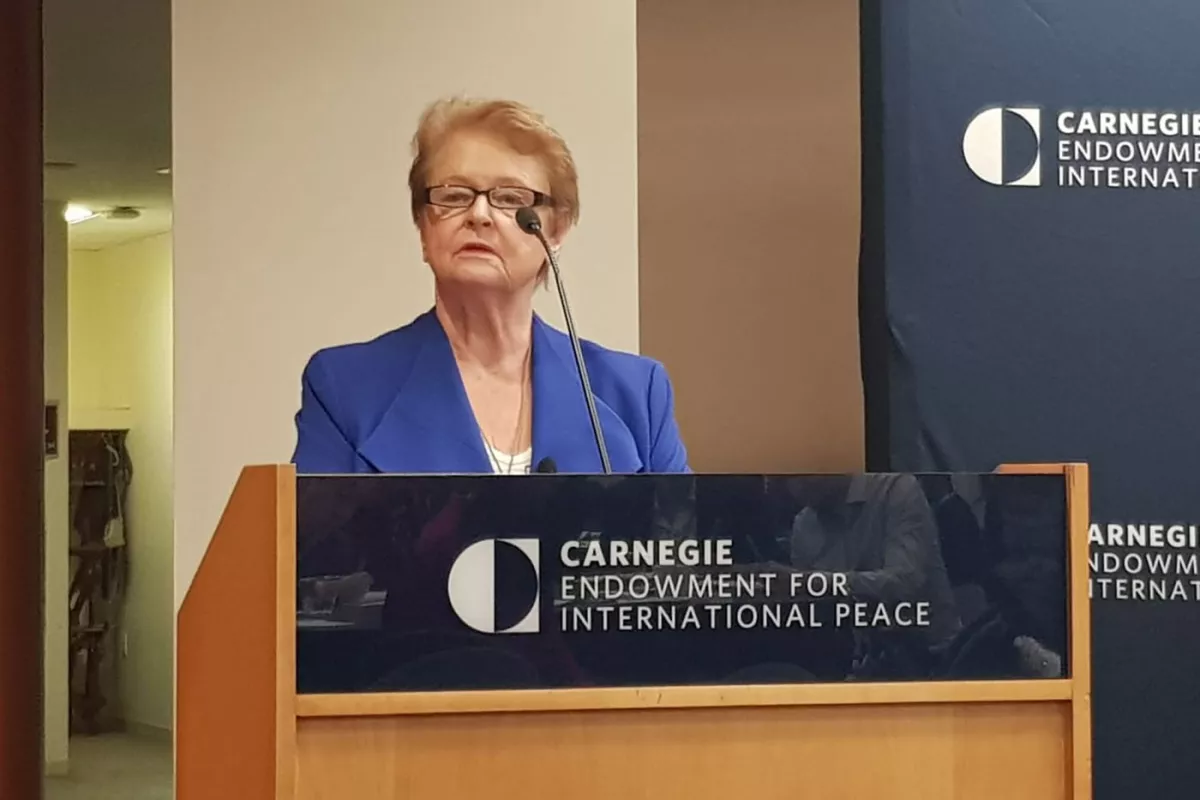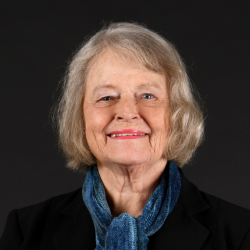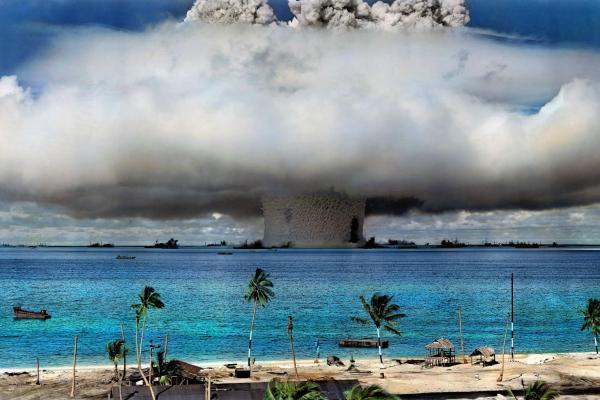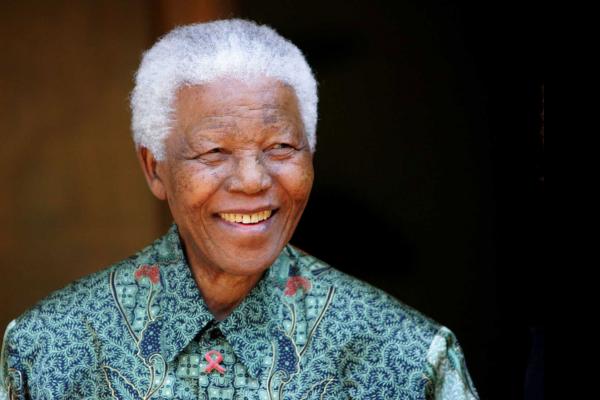A nuclear weapons-free world is possible with step-by-step disarmament

Gro Harlem Brundtland argues that nuclear disarmament is most likely to be achieved through an incremental process which can secure buy-in from all governments.
This speech was delivered at a panel discussion on the Future of Nuclear Arms Control at the Carnegie Endowment for International Peace in Washington D.C., on 26 September 2019.
Ladies and Gentleman. As Mary Robinson has explained, The Elders see nuclear catastrophe as one of the biggest threats to the future of humankind. As we have already heard here today: the international arms-control architecture is at risk of collapsing, and a new nuclear arms race between the US and Russia may well have begun. The stakes could not be much higher.
Let us briefly consider the scale of the risk we face: there are 14,000 nuclear warheads in existence today, with a combined destructive capability of nearly 100,000 Hiroshima-sized bombs.
Over 90% of these are in the hands of the US and Russia. Worryingly, almost 4,000 remain operationally deployed and, most disturbing of all, 2,000 are currently held on high alert status.
That’s 2,000 nuclear warheads, ready to be launched within a few minutes in the event of a perceived attack.
Our view is simple: As long as nuclear weapons remain in existence, it is inevitable that they will someday be used, whether by design, accident or miscalculation. The only guarantee of the non-use of nuclear weapons is their complete abolition.
Unfortunately, that is where the simplicity ends. The difficulty in crafting a fully enforceable global zero treaty regime means it is not politically realistic to expect the elimination of nuclear weapons anytime soon.
That is why we believe that nuclear disarmament is most likely to be achieved through a practical step-by-step process which can secure buy-in from all governments, including the nuclear powers and their allies.
We therefore advocate that the immediate, medium-term objective should be to focus on minimisation of nuclear weapons, but with total nuclear disarmament as the ultimate end goal.
This is why The Elders are proposing a ‘minimisation agenda’ that calls on all nuclear powers to take urgent first steps towards nuclear disarmament. This is made up of four key asks: Our “Four D’s”
The first is Doctrine: every nuclear state should make an unequivocal “No First Use” declaration.
The Elders believe that all nuclear-armed states should commit to a No First Use policy: a formal declaration that they will never use nuclear weapons except in response to a nuclear attack. Any nuclear state that does not feel ready to adopt No First Use should at the very least make a declaration that the “Sole Purpose” of nuclear weapons is to deter their use by others.
We understand that military strategists will always be wary of adopting positions that reduce their flexibility to respond to potential threats. However, the flexibility gained from a first use policy is largely illusory.
The threat of first use is simply not credible. The moral cost and global condemnation that would result from a nuclear attack on a non-nuclear state would exceed any conceivable military benefit. To carry one out against a nuclear adversary would mean mutual national suicide. And yet, by leaving open the possibility of a nuclear first strike, nuclear states force their potential adversaries to prepare for precisely that possibility, reducing trust and increasing the risk of accidental nuclear war.
Second, De-alerting: almost all warheads should be taken off high alert status.
With some 2,000 US and Russian weapons remaining on a dangerously high state of alert – ready to be launched within minutes of receiving information (or misinformation) about an opponent’s attack - the risk remains very high of nuclear war being triggered by accidental or unauthorised launches.
The prospect of human or system error is an omnipresent reality, the risk compounded by the prospect of cyber sabotage of communications systems. The highest priority must therefore be given to taking as many weapons as possible off their high-alert status.
Third, Deployment: substantially reduce the one-quarter of all nuclear warheads that are currently operationally deployed.
Extension of the New START treaty, which has reduced the number of each side’s deployed strategic weapons, is a crucial next step. But the US and Russia should also increase their ambition and start working towards a new agreement that could implement substantially deeper cuts to deployed warhead numbers.
So long as nuclear weapons exist, it is probably unavoidable that states will want to retain demonstrably survivable retaliatory forces, with some weapons kept intact and useable at short notice.
But in a world serious about moving to nuclear disarmament, it ought to be possible for the great majority of nuclear weapons to be not only moth-balled, but also partially dismantled.
And finally Decrease: dramatically cut the number of nuclear weapons in existence from 14,000 to around 2,000. Such a decrease should be spread evenly between US and Russia, with both reducing to no more than 500 each, and no increase in the arsenals of other states. This is in line with a 2010 study by the US Airforce as to the minimum warhead numbers that could constitute an effective US deterrence.
Successful progress on these measures could also produce positive momentum, creating conditions under which total elimination of nuclear weapons could become a more realistic goal.
Of course, the implementation of these measures would be far from a perfect solution. They would not get us to where we all want to be, which is a nuclear weapons-free world, but they would help to make the world a significantly safer place.
The Elders believe the challenges of achieving the final elimination of nuclear weapons are daunting and will require a significant amount of political will. But this is not a reason to despair. Small steps can be significant and what seems unthinkable now is likely to be far more achievable in a decade’s time if a minimisation agenda like the one we propose develops momentum.
As the Elders’ founder Nelson Mandela famously said “It always seems impossible until it is done”.
Thank you.
Watch Gro Harlem Brundtland's speech at the Carnegie Endowment for International Peace:











